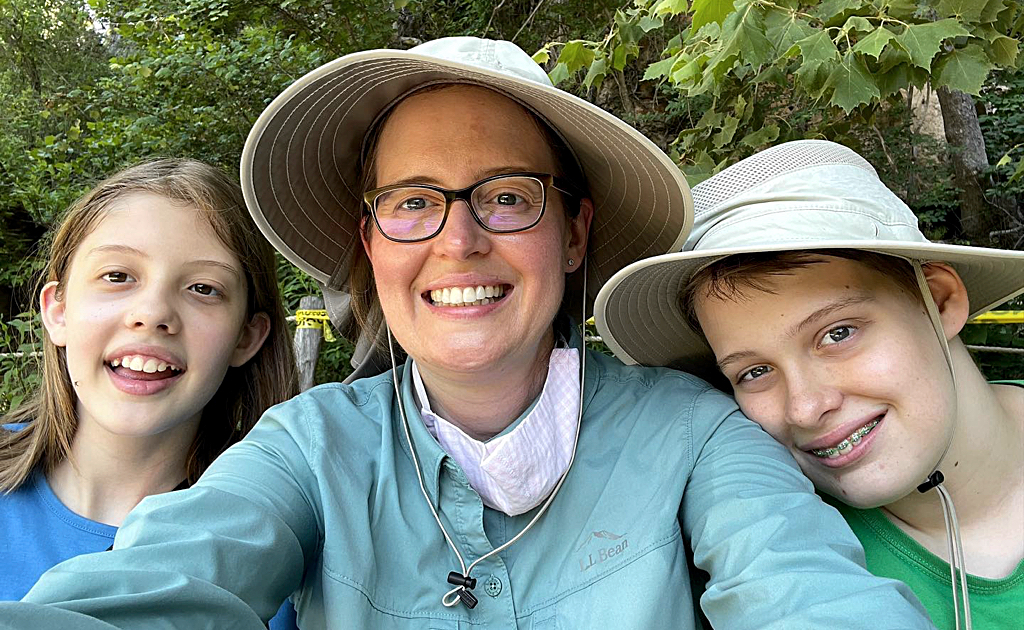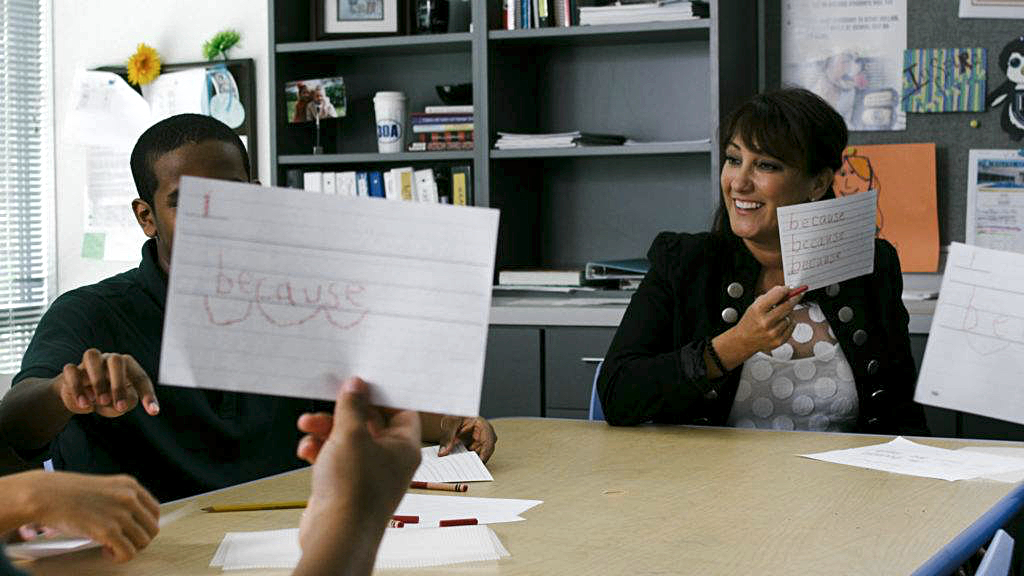
Measure What Matters
Family Structure and Student Outcomes
If we are honest with ourselves, there comes a turning point moment in the life of every education reformer when we must confront the limitations of education reform. Such an experience happened to me around 4 p.m. on July 11, 2016, near Third Avenue and 149th Street in the heart of the South Bronx.
Earlier that year I had read the 2015 Citizens’ Committee for Children’s (CCC) annual ranking of New York City’s fifty-nine Community Districts, based on eighteen different measures of child well-being. In education, the three categories are the share of three- and four-year-olds enrolled in early education programs, passing rates on the state’s elementary and middle school reading and math tests, and high school graduation rates.
In 2015, among the fifty-nine districts, the five showing the highest overall risk to child well-being were all located in the South Bronx. Table 16.1 illustrates the disparity between the highest-risk district, Hunts Point, and—less than two miles away—the lowest-risk district on Manhattan’s Upper East Side.1
Around the same time, another study showed that at ninety New York City schools, not a single black or Hispanic student had passed the 2014 state tests.2 Zero. Many of these schools were also located in the South Bronx. Indeed, by virtually every measure, educational opportunity in the South Bronx was in free fall, and had been for generations.
Meanwhile, as CEO of Public Prep, a network of all-boys and all-girls public charter schools, I was in the midst of strategic discussions regarding where to locate our future schools. Given the glaring need for more high-quality education options in the Bronx, as well as overwhelming demand for our Boys Prep and Girls Prep schools, we decided to concentrate our growth in the South Bronx.
Thus, at the end of the 2015–16 school year, Public Prep moved its headquarters from tony Tribeca to the battered South Bronx. We leased an office location that abuts an outreach center that provides a syringe exchange and mental health counseling to local drug addicts. This is exactly where we needed to be to better understand the community we serve and the challenges facing the kids we educate.
On that hot July afternoon, my team took a walking tour of the neighborhood to find a convenient bank, office supply store, bodega, and where to score the best chili relleno. Along the way, we encountered a twenty-seven-foot-long, baby-blue Winnebago truck, that—judging by the cheery reaction of the people standing nearby—was a familiar and welcome fixture in the neighborhood.
That was my turning point.
On the side of the truck, vividly inscribed in graffiti lettering, was the phrase “Who’s Your Daddy?” The truck turned out to be a mobile DNA testing center that charges $350 to $500 to answer questions such as “Is she my sister?” or “Are you my father?”3 Demand had been so robust that the owner added a second truck so he could offer Who’s Your Daddy? services in other boroughs and neighboring cities.
I was surprised that such a truck and its on-demand services even existed. But what astonished me more was the absolute normalcy and acceptance of its existence. The Who’s Your Daddy? truck was clearly providing a needed function to the community. The owner describes why people used his service: “I realized that many of [my clients] were carrying around a huge burden—sometimes for decades. They live daily without the assurances that most people take for granted, such as: Who is my mother? Who is my brother? Am I really who I think I am?”4
Why were so many people pondering such profound questions? I looked back at the CCC data to explore some additional categories related to children and youth. Table 16.2 displays some of what I found (again comparing Hunts Point with the Upper East Side).5
Could it be that the educational disparities between these two districts were not just due to geography, economics, and race? Could it be, perhaps, that differences in family structure, as evidenced by the yawning gap in the percentage of children being raised in single-parent families, were a major explanatory factor for why education outcomes in the South Bronx have been so poor for so long?
Asking these questions led me down a path of no return.
***
I decided to study state health data related to all births6 and nonmarital births7 in the Bronx. In 2016, the nonmarital birth rate was 63 percent for all women, and nearly 80 percent for women under twenty-five. (Nonmarital birth data are not collected for men.) The latter represented 4,133 newborns in the Bronx who were likely going to be raised in single-parent households with unstable family structures, and very likely to suffer the same consequences represented in the CCC child well-being rankings.
Continuing with my research, I discovered that what was happening in the Bronx was a microcosm of the United States.
As shown in figure 16.1, there has been a five-decade explosion in nonmarital birth rates among women of all races.8
And as we see in figure 16.2, over the past quarter century the rate of increase has been greatest among white and Hispanic women, although it remains very high among African American women too.9
I began to wonder how these staggeringly high nonmarital birth rates, particularly among young women, and the ensuing large numbers of children being raised in single-parent families correlated to student achievement outcomes—not just in the Bronx but across New York and the nation.
I turned to the New York State Education Department’s (NYSED) easy-to-use data site, which allows users to filter state test and graduation data by many factors, including school, gender, race/ethnicity, migrant status, geographic district, English language learner status, economic status, and disability status. Yet it provides no way to disaggregate achievement data by family structure. No other states seemed to do so either.
So I turned to the National Assessment of Educational Progress (NAEP) and its useful Data Explorer, which allows users to “create statistical tables, charts, maps . . .” by grade, subject, and jurisdiction “to help . . . explore decades of assessment results, as well as information about factors that may be related to student learning.”10 Per Section 303 of the NAEP law,NAEP must “include information on special groups, including, whenever feasible, information collected, cross tabulated, compared, and reported by race, ethnicity, socioeconomic status, gender, disability and limited English proficiency.”11 And yet here, once again, as in New York and the other forty-nine states, I found no way by which to review results by family structure, despite the fact it is clearly a “factor that may be related to student learning.”
Finally, I accessed the Data Quality Campaign (DQC), the nation’s foremost organization advocating for effective education data policy and use. DQC’s underlying premise is that “When students, parents, educators, and policymakers have the right information to make decisions, students excel,” and as part of its work, the organization reviews state assessment systems. Take this excerpt from its 2017 Show Me the Data report:
[Eighteen] states do not disaggregate student performance by at least one legally required subgroup (including race, ethnicity, gender, English language learners, students with disabilities). In nine states, performance data is not disaggregated by any subgroup, which can hide achievement gaps and the students who need more support. It also keeps schools that are doing well with traditionally underserved students from being celebrated and emulated.12
This is powerful feedback for states to improve the lenses through which student achievement data are reported. Yet—once again—there’s no mention, much less criticism, of the fact that no state disaggregates such data by family structure.
It should not be this way.
Major social changes, particularly in the family structures in which children are raised, have occurred over the last several generations. Yet gauges and categories used to evaluate progress in student achievement have stubbornly focused on race, class, gender, and geography. By disregarding family structure, the data obscure how this massive demographic shift might be an explanatory factor that rivals and perhaps overpowers other well-documented achievement gaps.
Perhaps the reason for this omission is that family structure is not a static concept. Families change. Maybe it’s impossible to create measures around a moving target, right?
Wrong.
***
In its 2010 report Family Structure and Children’s Health in the United States, the National Center for Health Statistics declared, “In view of the changing family structure distribution, new categories of families such as unmarried families or unmarried stepfamilies need to be studied so that the health characteristics of children in non-traditional families can be identified.”13
The report defined seven distinct and mutually exclusive family structures: “nuclear,” “single-parent,” “blended,” “unmarried biological or adoptive families,” “cohabiting,” “extended,” and “other,” the last being defined as a family consisting of one or more children living with related or unrelated adults who are not biological or adoptive parents (e.g., grandparents).
The report observed that children found to have the most consistently positive health outcomes were raised in nuclear families, that is, “living with two parents who are married to one another and are each biological or adoptive parents to all children in the family.”
Four years later, the same federal agency conducted another study to assess, by family structure type, the likelihood of “adverse family experiences,” defined as potentially traumatic events or circumstances that children may have experienced that can have lasting negative consequences into adulthood. We see the results in figure 16.3.14
As we see, and as the Center’s report states, “Children living with one biological parent were between three and eight times as likely as children living with two biological parents to have experienced neighborhood violence, caregiver violence, or caregiver incarceration or to have lived with a caregiver with mental illness, or an alcohol or drug problem.”
We also see that “in view of the changing family structure distribution,” healthcare leaders and analysts have begun to study causal and correlational links between family structure and a range of child outcomes. Most importantly, these analyses are yielding new explanations for seemingly entrenched problems and ushering in a new wave of family-focused prescriptions in the health arena.
***
In education, on the other hand, even among ardent reformers and careful analysts doing their best to understand and do something about student achievement gaps, family structure is virtually never considered as a possible, even critical, factor in explaining those gaps. In 2017, I had the temerity to call out Bill Gates15 for literally omitting the words parent and family from a three-thousand-word essay in which he lamented that, even after seventeen years of investing billions of dollars in education reform, “by and large, schools are still falling short on the key metrics of a quality education.”16
Months later, Bill and Melinda Gates released their 2018 annual letter,17 this one focused on the ten “toughest questions” that they get asked. Question two is, “What do you have to show for the billions you’ve spent on US education?” To which they replied, “Unfortunately, although there’s been some progress over the past decade, America’s public schools are still falling short on important metrics, especially college completion. And the statistics are even worse for disadvantaged students.” Once again, however, there was no mention of the potential impact of family structure on why America’s public schools are still falling short.
Yet more than half a century ago, the Coleman report,18 still widely considered the most important education studyof the twentieth century, established the primacy of family structure and stability in driving educational outcomes for children.19 Today, we have a mountain of irrefutable evidence that children raised in stable, married, two-parent households (regardless of gender) have, on average, far superior life outcomes, not only in education but also in virtually every other category of healthy human development. What’s weird about the deafening silence on the impact of family structure is that the education reform community and the charter-school sector have already signaled in several ways that they understand the criticality of family stability to educational outcomes.
Consider, for example, the fact that many top charter schools do not “backfill” or enroll transfer students after third grade. Why? One reason is that the risk is so great that a single eight-year-old could be from an unstable family and thus so disruptive to the classroom environment that it is better to deprive any eight-year-old of the opportunity for a seat.
***
The omission of family structure and stability as a measure crucial to child development is no benign oversight. It has consequences, the least of which is that diagnoses based on narrow data snapshots that ignore family structure as causal of poor outcomes tend to lead to narrow prescriptions that fail to leverage the transformative power of family structure to improve outcomes.
Take, for example, the Office for Civil Rights 2014 Data Collection on Early Childhood Education, which reported that “racial disparities in discipline begin in the earliest years of schooling. Black students represent 18 percent of preschool enrollment, but 42 percent of preschool students suspended once, and 48 percent of students suspended more than once.”20
What could be causing such huge disparities by race when it comes to discipline? Consider (see figure 16.4) a 2017 Pew Research Center study showing that more than half (58 percent) of black children live with an unmarried parent, alongside 36 percent of Hispanic children and 24 percent of white children.21 Can anyone seriously doubt that the absence of a second parent (most often the father) leads to behaviors that include acting out in school?

This is apt to get even worse. For 2017, the National Center for Health Statistics reports that the nonmarital birth rate to women under twenty-five was 71 percent (see table 16.3).22

Every racial group is impacted, but the issue is most acute in the black community, where nine out of ten babies born to women under twenty-five in 2017 were outside of marriage. And in a depressing example of how the racial achievement gap is being closed, 61 percent of babies born to white women under twenty-five were also outside of marriage. Worse still, more than 41 percent of unmarried women under twenty-five who gave birth in 2017 were bearing their second to eighth child.
In my rough estimate, unmarried young women who gave birth during the single year of 2017 were raising some 1.1 million children, creating enormous stress for these young mothers valiantly trying to hold it together. Nationwide, huge numbers of young single mothers are raising very young children, in many cases multiple children, from different fathers who often abandon their responsibilities. As a result, these children are growing up in environments where they are much more likely to experience the kinds of toxic stress that have lifelong, adverse consequences on their development, which can likely lead to a generational treadmill of poverty, and that foster antisocial behavior in school.
Is it not possible that these differences in family structure by race are a large factor in explaining the racial differences in disciplinary outcomes? We will never know unless we have the courage to ask and then answer the question.
Absent such data, a common explanation for this huge racial disparity in student discipline is that teachers are either explicitly or implicitly biased against black students. This assumes that some of the most talented, “woke” people in the country—teachers—who have committed their lives to social justice and improving the lives of disadvantaged children, are in fact discriminating on a racial basis, whether intentionally or not, against the very students they have sworn to educate.
Because of this assumption, there has been an explosion in anti-bias training, indeed the formation of a whole cottage industry. In New York City alone, Schools Chancellor Richard Carranza has committed $23 million to speed up antibias training for about 125,000 educators and employees, calling it a “cornerstone” of his plan to improve schools.23 Organizations like Teaching Tolerance and Border Crossers (renamed the Center for Racial Justice in Education) “train educators to #DISRUPTRACISM” and provide participants with opportunities to “identify instances where they themselves may have witnessed or committed racial microaggressions, and gain strategies to interrupt them.” Similarly, Teaching Tolerance offers free resources to help “educators grow their racial competence” and programs that “emphasize social justice and anti-bias.”
This one-size-fits-all explanation and set of interventions is wrong. We must break the perception that every disparity that exists between groups (e.g., race) is due to a negative association with that grouping (e.g., racism), as opposed to a factor that transcends that grouping (e.g., family structure).
It is not clear whether the lack of recognition of the role and potential impact of family structure is willful or just plain ignorance. But the dearth of student outcome data parsed by family structure makes it much easier to come to erroneous, race-focused conclusions. It also masks opportunities to implement different types of interventions that could improve life outcomes for the next generation. For example, understanding the role of family structure could lead more schools to teach middle and high school students the success sequence, that is, the series of life decisions—education, work, marriage, then children—that has led 97 percent of individuals who follow this progression to achieve economic success and often a break in the intergenerational cycle of poverty.24 (See Mona Charen’s excellent discussion of the success sequence in chapter 15.)
***
In my own research into the role that family structure plays in determining educational outcomes, I discovered Chester Finn’s simple analysis of the limited leverage of schools: “Formal education occupies a surprisingly slender portion of our children’s lives. The youngster who faithfully attends class six hours a day, 180 days a year, from kindergarten through twelfth grade, will, at the age of eighteen, have spent just 9 percent of his hours on earth under the school roof. The other 91 percent is spent elsewhere.”25 The quality of the “elsewhere” environment is heavily determined by the structure and stability of that child’s family.
If we truly want to improve outcomes for children, we must have the moral courage to measure student achievement outcomes by family structure groupings as routinely as we already do by race, class, and gender. We have to create a more complete picture to understand the primary forces impacting student achievement. The present dearth of data analyzing student outcomes by family structure is no victimless crime, for the void has been filled by causal explanations and interventions primarily by race and class, factors that do not tell the whole story.
More importantly, we must expand the universe of solutions and interventions we deploy to assist young people to find pathways to success, especially in historically disempowered communities. They must be helped to understand that they have power in their individual choices, and that those decisions can shape their destiny despite structural barriers associated with race, class, and poverty. We in education need to explicitly communicate to children of all races and genders the importance of, and likely rewards that come from, sequentially completing an education, getting a job, and forging a strong and stable family life (which usually entails marriage before the baby carriage).
***
Once I encountered the Who’s Your Daddy? truck in the Bronx three years ago, I was forced to confront my own beliefs about the factors that drive the progress we have made (or not) in educational outcomes. Why have some groups of children consistently succeeded while others remain stagnant or grow worse? In answering that question, I have found that convenient categories of race, class, and gender generally do not hold, and that a deeper analysis is always necessary to get to the truth.
Based on decades of powerful research, there are factors more fundamental to human development that transcend those familiar categories, with (in my view) the most prominent being the structure and stability of the family within which a child is raised.
What we measure does matter.
On behalf of the kids whose lives we are seeking to improve, I hope that we education reformers can face up to our own identity shackles and the self-limiting beliefs that they may be placing on us.
I hope.
Originally published in “How to Educate an American: The Conservative Vision for Tomorrow’s Schools”, edited by Michael J. Petrilli and Chester E. Finn, Jr. (Templeton Press, 2020)
____________________________________________________________________________________________________
1. Citizens’ Committee for Children, CCC Community Risk Ranking: Child Well-Being in New York City’s 59 Community Districts, February 2015, https://www
.cccnewyork.org/wp-content/uploads/2015/01/CCCRiskRankingNYC.pdf.
2. Stephen Rex Brown and Ben Chapman, “Exclusive: 90 City Schools Failed to Pass a Single Black or Hispanic Student on State Tests, Study Shows,” New York Daily News, September 2, 2014, https://www.nydailynews.com
/new-york/education/exclusive-achievement-gap-worsens-black-hispanic
-students-article-1.1924366.
Notes
3. , “Who’s Your Daddy Truck—Blog Posts,” Health Street accessed August 16, 2019, https://www.health-street.net/tag/whos-your-daddy-truck/.
4. Jared Rosenthal, “New Docu-Reality TV Series—Who’s Your Daddy Truck,” Health Street (blog), February 6, 2014, https://www.health-street.net
/vh1-swab-stories/new-docu-reality-tv-series-whos-your-daddy-truck/.
5. Citizens’ Committee for Children, CCC Community Risk Ranking.
6. New York State Department of Health, “Table 7: Live Births by Mother’s Age and Resident County New York State–2016,” accessed August 15, 2019, https://www.health.ny.gov/statistics/vital_statistics/2016/table07.htm.
7. New York State Department of Health, “Table 10: Out-of-Wedlock Live Births by Mother’s Age and Resident County New York State–2016,” accessed August 15, 2019, https://www.health.ny.gov/statistics/vital_statistics/2016
/table10.htm.
8. Births to Unmarried Women: Indicators on Children and Youth (Washington, DC: Child Trends, 2015), 3, https://www.childtrends.org/wp-content
/uploads/2015/03/75_Births_to_Unmarried_Women.pdf.
9. Elizabeth Wildsmith, Jennifer Manlove, and Elizabeth Cook, “Dramatic Increase in the Proportion of Births Outside of Marriage in the United States from 1990 to 2016,” Child Trends (blog), August 8, 2018, https://www
.childtrends.org/publications/dramatic-increase-in-percentage-of-births
-outside-marriage-among-whites-hispanics-and-women-with-higher-edu
cation-levels.
10. “The Nations Report Card,” accessed August 15, 2019, https://www.nations
reportcard.gov/.
11. “The NAEP Law,” National Assessment Governing Board, accessed August 16, 2019, https://www.nagb.gov/about-naep/the-naep-law.html.
12. Show Me the Data: 2017 (Washington, DC: Data Quality Campaign, 2017), https://2pido73em67o3eytaq1cp8au-wpengine.netdna-ssl.com/wp-content
/uploads/2018/01/DQC-Show-Me-the-Data_final.pdf.
13. D. L. Blackwell, Family Structure and Children’s Health in the United States: Findings from the National Health Interview Survey, 2001–2007, Vital and Health Statistics 10, no. 246 (Hyattsville, MD: National Center for Health Statistics, Centers for Disease Control and Prevention, US Department of Health and Human Services, 2010), https://www.cdc.gov/nchs/data/series
/sr_10/sr10_246.pdf.
14. Matthew D. Bramlett and Laura F. Radel, “Adverse Family Experiences among Children in Nonparental Care, 2011–2012,” National Health Statistics Reports, no. 74 (May 7, 2014), https://www.cdc.gov/nchs/data/nhsr/nhsr074
.pdf.
15. Ian Rowe, “Speaking Truth to Power: Another Missed Opportunity to Address the Role Schools Must Play to Break the Cycle of Poverty,” Flypaper, Thomas B. Fordham Institute (blog), October 26, 2017, https://fordhaminsti
tute.org/national/commentary/speaking-truth-power-another-missed
-opportunity-address-role-schools-must-play.
16. Bill Gates, “Our Education Efforts Are Evolving,” Gates Notes (blog),
October 19, 2017, https://www.gatesnotes.com/Education/Council-of
-Great-City-Schools.
17. Bill Gates and Melinda Gates, “Our 2018 Annual Letter,” Gates Notes (blog), February 13, 2018, https://www.gatesnotes.com/2018-Annual-Letter.
18. “Re-Visiting the Coleman Report,” Education Next, January 5, 2016, http:
//educationnext.org/revisiting-the-coleman-report/.
19. Barbara J. Kiviat, “The Social Side of Schooling,” Johns Hopkins Magazine, April 2000, http://pages.jh.edu/jhumag/0400web/18.html.
20. US Department of Education, Office for Civil Rights, Data Snapshot: Early Childhood, Issue Brief, no. 2, March 2014, https://www2.ed.gov/about
/offices/list/ocr/docs/crdc-early-learning-snapshot.pdf.
21. In figure 16.4, children who are not living with any parents are not shown.
See the Pew Research Center analysis of 2017 Current Population Survey
March Supplement (IPUMS): Pew Research Center, “Nearly Half of Black
Children Live with a Solo Mom,” accessed August 30, 2019, https://www
.pewresearch.org/fact-tank/2018/04/27/about-one-third-of-u-s-children-are
-living-with-an-unmarried-parent/ft_18-04-11_unmarriedparents_race/.
22. Joyce A. Martin et al., National Vital Statistics Reports: Births: Final Data for 2017 (Hyattsville, MD: National Vital Statistics System, 2018), https://www
.cdc.gov/nchs/data/nvsr/nvsr67/nvsr67_08-508.pdf.
23. Christina Veiga, “Carranza Aims to Speed Up Anti-Bias Training for Educators,” Chalkbeat, August 15, 2018, https://www.chalkbeat.org/posts
/ny/2018/08/15/carranza-aims-to-speed-up-anti-bias-training-for-educators
-calling-it-a-cornerstone-to-school-improvement/.
24. Wendy Wang and W. Bradford Wilcox, The Millennial Success Sequence:
Marriage, Kids, and the “Success Sequence” among Young Adults (Washington, DC: American Enterprise Institute and the Institute for Family Studies, 2018), http://www.aei.org/publication/millennials-and-the-success
-sequence-how-do-education-work-and-marriage-affect-poverty-and-finan
cial-success-among-millennials/.
25. Mitch Pearlstein, “What to Do about the Schools,” Center of the American Experiment, April 4, 2011, https://www.americanexperiment.org/article
/what-to-do-about-the-schools/.




















